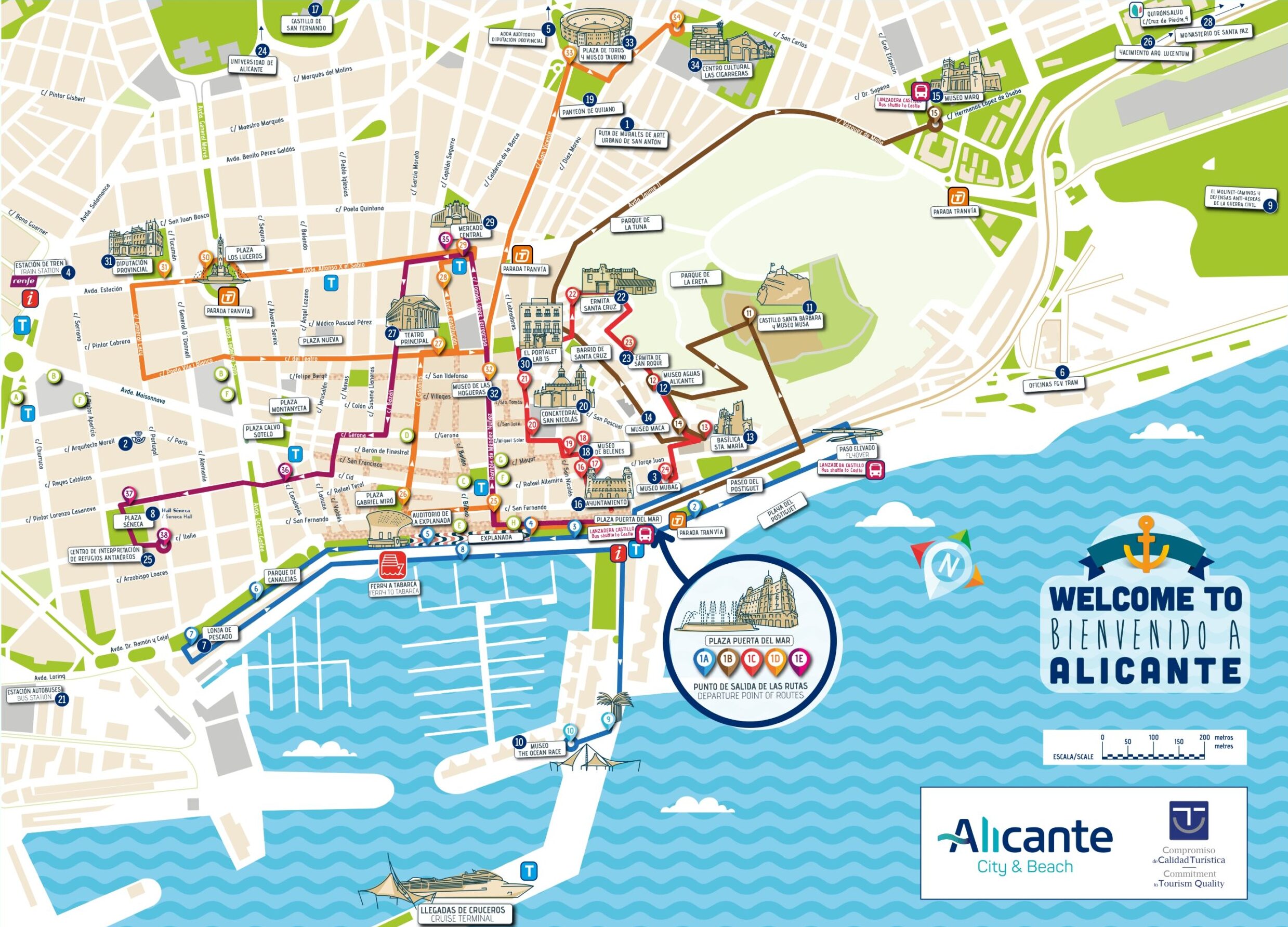ROUTE:
3.5 km
DURATION:
2 hours
DIFFICULTY:
Easy
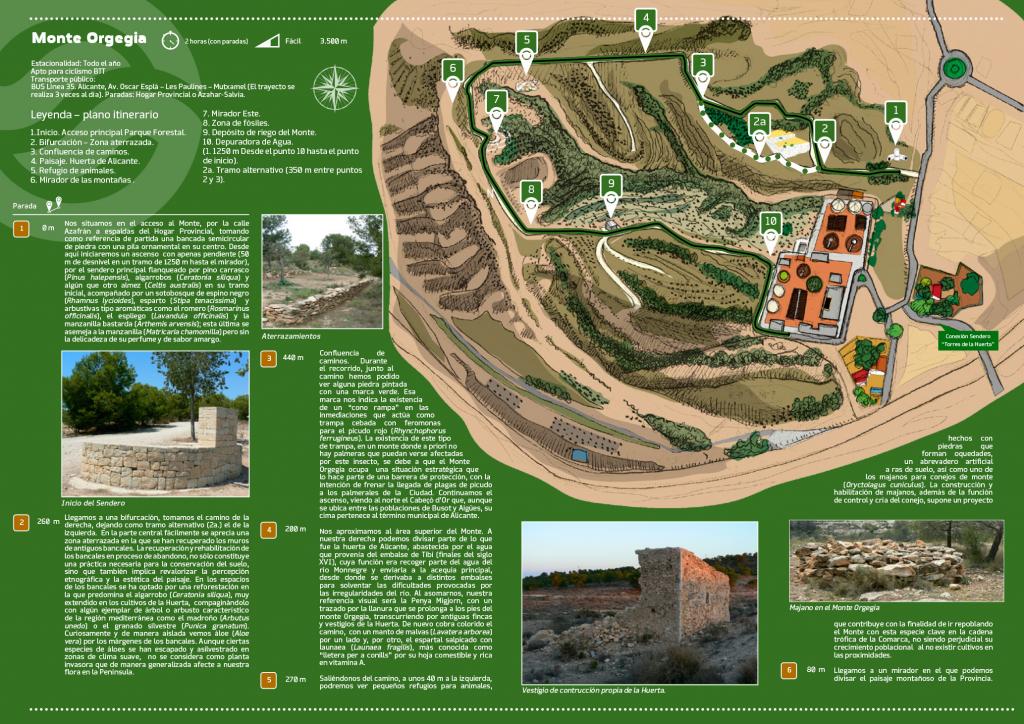
The Monte Orgegia is located in what was once the agricultural heartland of Alicante. The decline of traditional farming, replaced by industrial agriculture, along with urban growth, led to the gradual abandonment of old agricultural practices. This area was later reforested by the former ICONA organization, leaving some terraced fields in the valleys.
In March 2006, Monte Orgegia was inaugurated as a forest park, becoming the first project of the Metropolitan Forest Plan for the 21st century in the municipality of Alicante. Reforested with around 20,000 Mediterranean trees and shrubs, the park covers an area of 77 hectares. It includes 3 kilometers of trails and two viewpoints that offer stunning views of the l’Alacantí region and the surrounding mountains. To support wildlife recovery, nesting boxes, water feeders, and stone shelters were installed. A water reservoir with a drip irrigation system was also built to conserve the flora.
Although Alicante is one of the most mountainous provinces in Spain, with rugged terrain, Monte Orgegia has gentle slopes. From one of the viewpoints, visitors can enjoy a panoramic view of the province’s mountainous landscape, with the nearby mountains marking the boundaries of the l’Alacanti region.
Trail Stops
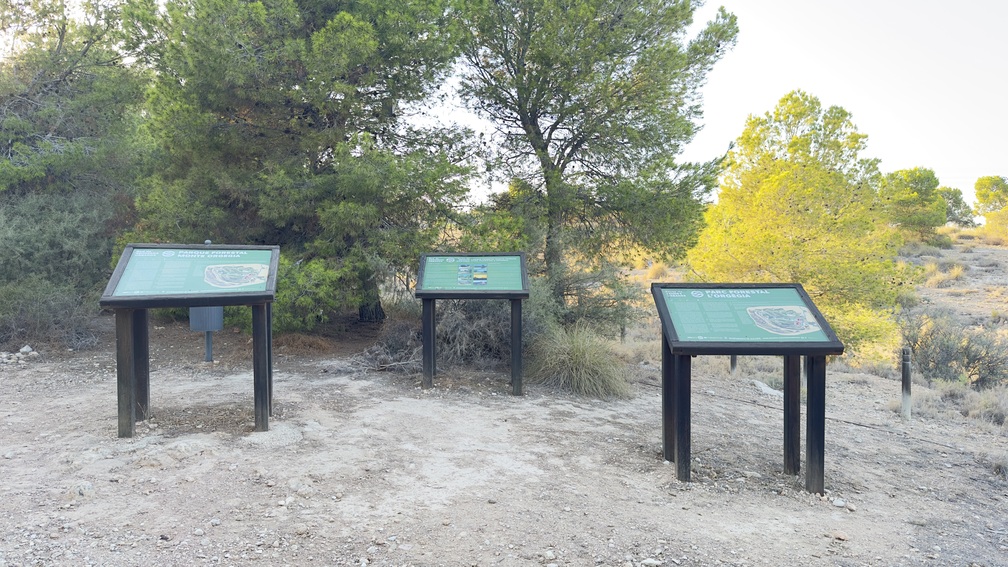
1. Main access Forest Park
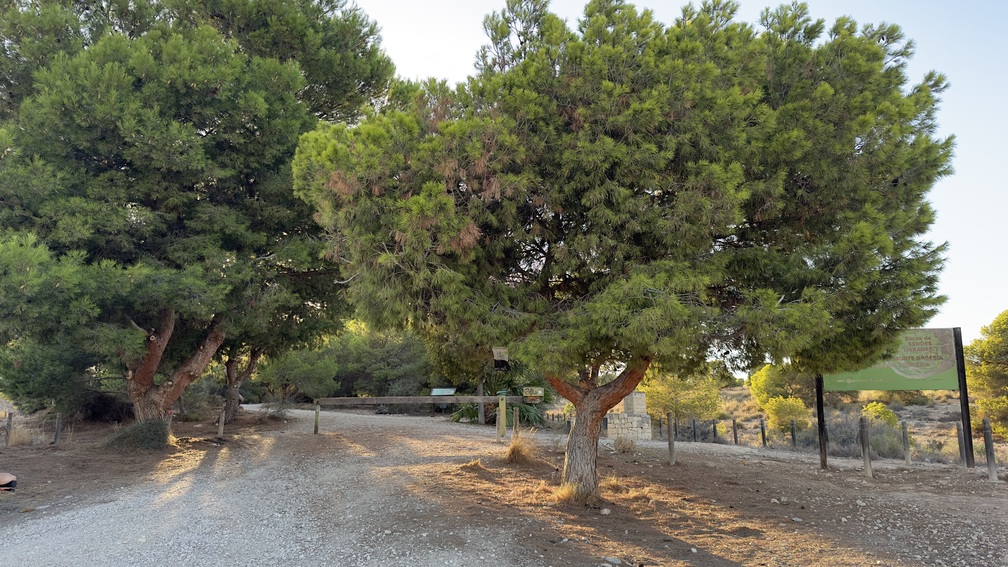
2. Fork – Terraced area
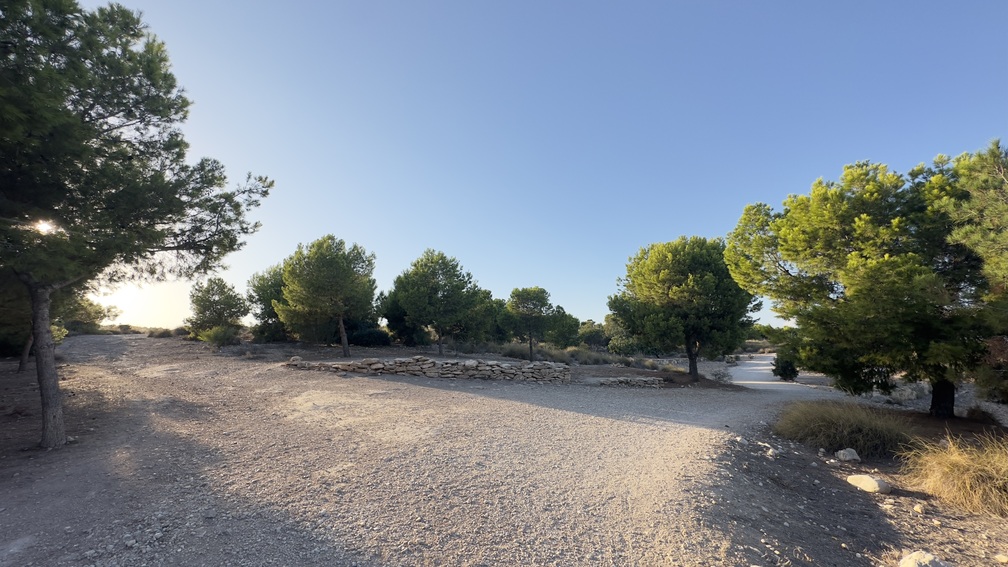
3. Path convergence
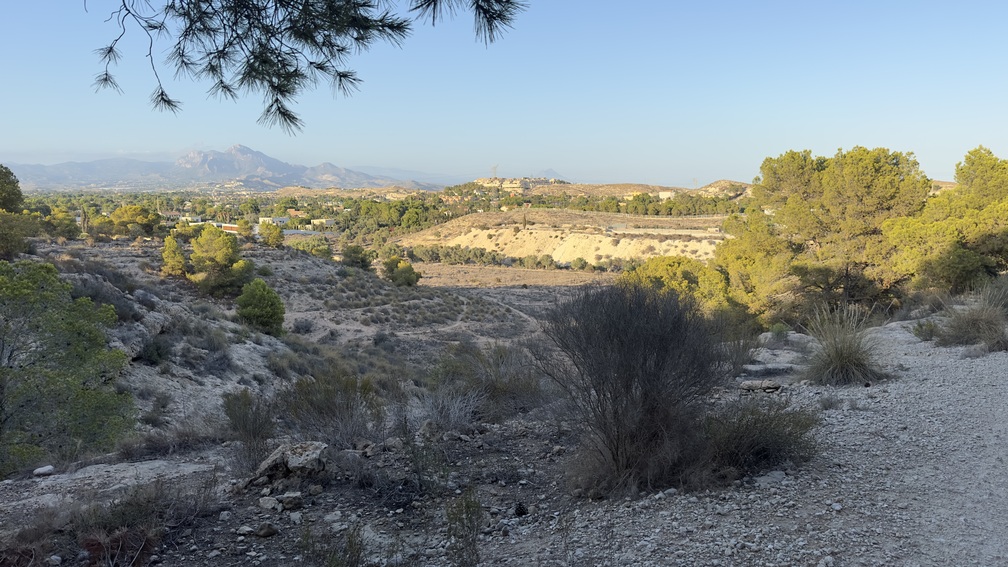
4. Landscape. Huerta of Alicante

5. Animal shelter

6. Mountain Viewpoint
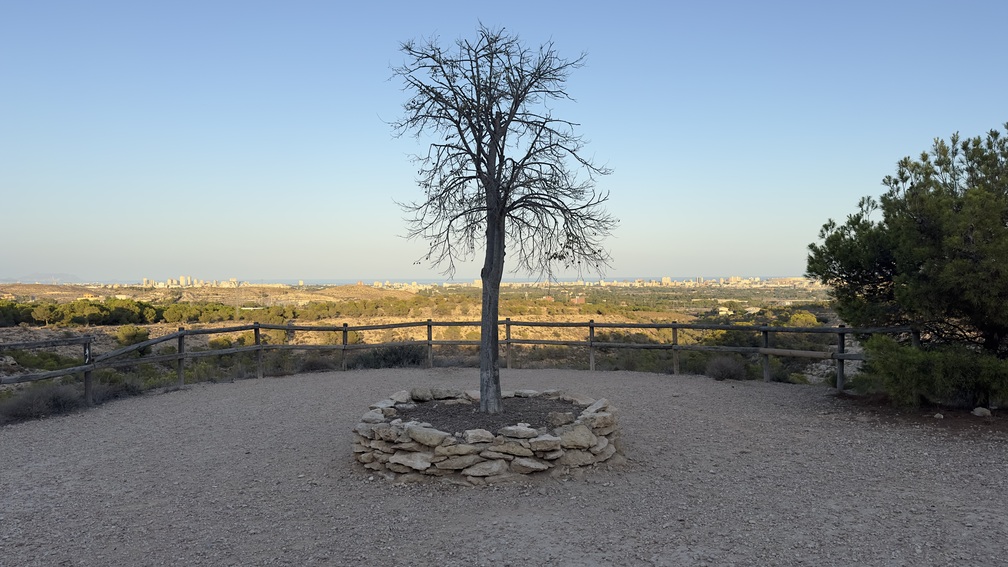
7. East Viewpoint
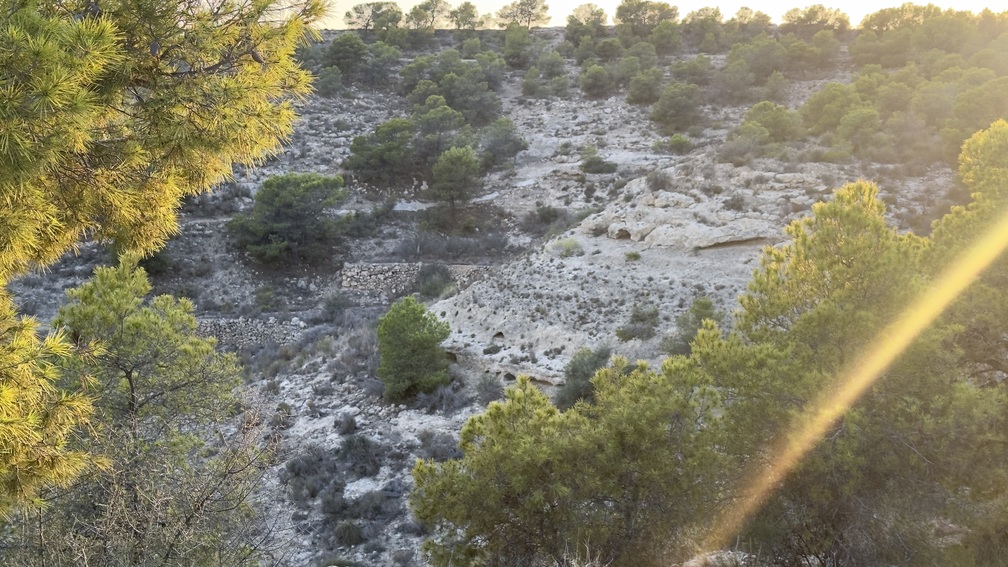
8. Fossil Zone
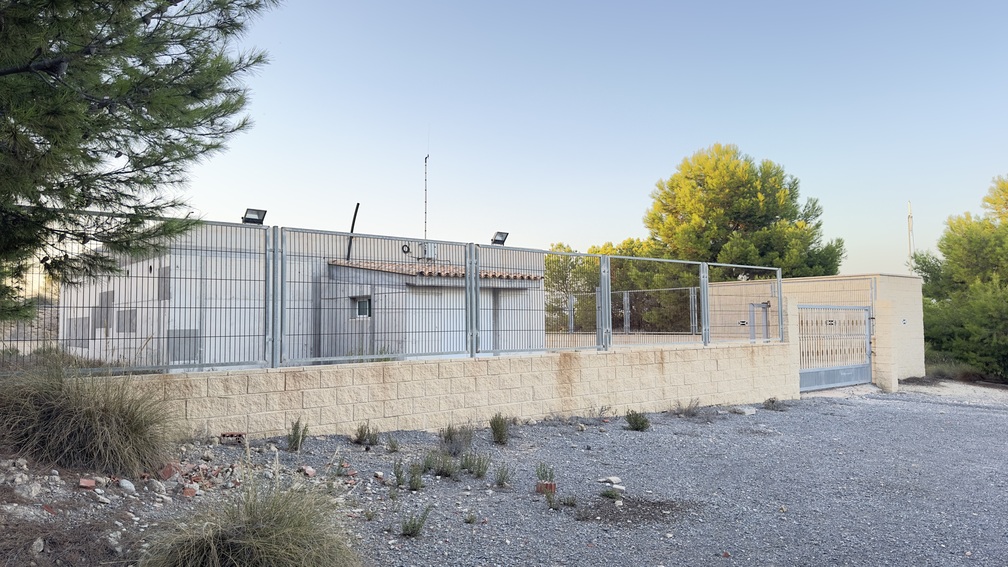
9. Mountain Irrigation Reservoir
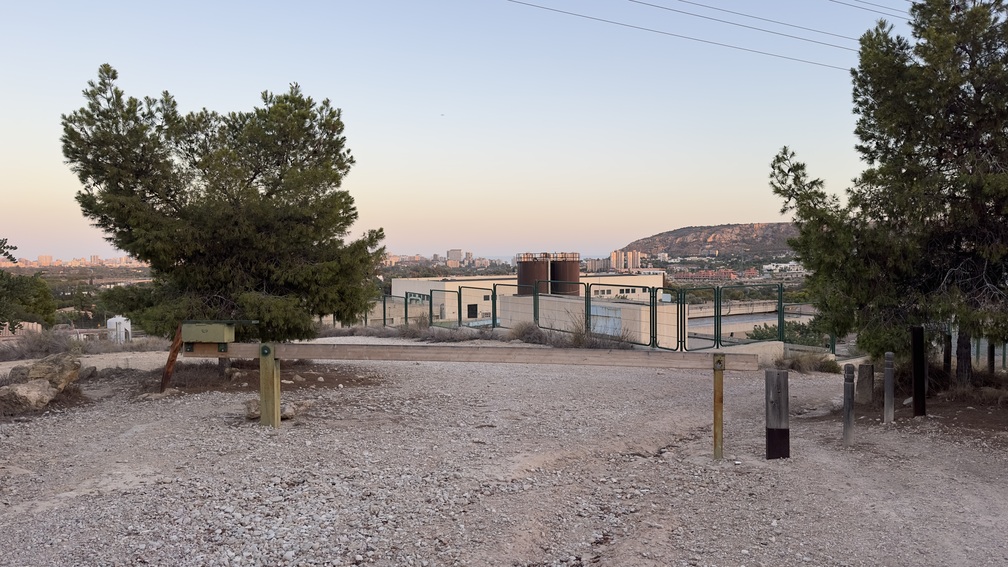
10. Water Treatment Plant
How to get there
Access point to the trail via Calle Azafran
BUS: Line 10 to C.C Vistahermosa and 37 minutes on foot to Calle Azafran
All Routes in Alicante
Services that might interest you
|
AGUITUR
Tourist guides accredited by the Valencian Agency of Tourism Tourist guides accredited by the Valencian Agency of Tourism |
|
ALACANT CIRCUIT
Tourist guides accredited by the Valencian Agency of Tourism Tourist guides accredited by the Valencian Agency of Tourism |
|
BLUEMED TOURS S.L
SICTED Badge The Exquisite Mediterranean CREATURISME VALENCIAN COMMUNITY CULTURAL CRATURISME VALENCIAN COMMUNITY WINE TOURISM CONVENTION BUREAU ALICANTE ALICANTE WINE ROUTE Tourist guides accredited by the Valencian Agency of Tourism Languages: English, Spanish, French, Valencian |
|
Esatur XXI, S.L.
Distintivo SICTED ISO 9001 ISO 14001 ISO 27001 Tourist guides accredited by the Valencian Agency of Tourism Tourist guides accredited by the Valencian Agency of Tourism Languages/ Languages: English, Español, Valencià |
|
FREE WALKING TOURS ALICANTE
Tourist guides accredited by the Valencian Agency of Tourism Tourist guides accredited by the Valencian Agency of Tourism |
|
OXYTOURS
Guías de Turismo acredidatos por la Agencia Valenciana de Turismo Tourist guides accredited by the Valencian Agency of Tourism |
|
TRAMUNTANA AVENTURA
Q Certificate for Tourist Quality Sicted Certificate Tourist Guides accredited by the Valencian Agency of Tourism Tourist guides accredited by the Valencian Agency of Tourism |
|
TURIGUIAS
SICTED Quality Certificate Tourist guides accredited by the Valencian Agency of Tourism Tourist guides accredited by the Valencian Agency of Tourism |
|
ULA Guides
SICTED Distinctive Tourist guides accredited by the Valencian Agency of Tourism Tourist guides accredited by the Valencian Agency of Tourism Languages/ Languages: Deutsch, English, Español, Français, Italiano, Valencià, others |
| Alicante By Bike & Rentals Tours |
| Bike Rent in Alicante |
| Blue Bike | Rental & Tour |
| Rent Point- Rent Bike Alicante |
| Bikes&City Alicante – Alquiler, rutas |
| BLUE BIKE ALICANTE |
| ESATUR |
| SEGWAY ALICANTE |
| SIS TOURS EVENTS |
| TRAMUNTANA AVENTURA |
| AKRAVIBE |
| AVENTURERO CATAMARÁN S.L |
| ALICANTE RACING QUADS RENT |
| ALIJETSET |
| AWANA |
| BLUE VALLEY |
| CENTRO BUCEO ALTAIR |
| CLUB DE SURF EL MORENO |
| EPICALBOATS |
| ENERGY ACTIVE CLUB |
| FANAUTIC CLUB ALICANTE |
| HIKINGALICANTE |
| LLOGA UN LLAÜT |
| MARINA JETS S.L |
| OXYTOURS |
| PARASAILING ALICANTE |
| SIS TOURS EVENTS |
| TERRENODEAVENTURA |
| TRAMUNTANA AVENTURA |
| ALICANTE RACING QUADS RENT |
| OXYTOURS |
| TRAMUNTANA AVENTURA |
* Important Notice
The Alicante Municipal Tourist Board is not responsible for any changes that may occur in the contact details, schedules, locations of accommodations, restaurants, tourist service companies, and transport, as well as in the cultural facilities of the city. It is recommended to verify the information in advance.

